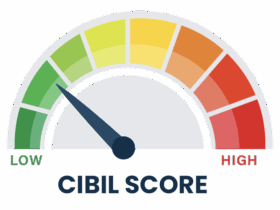As a small and medium-sized enterprise (SME) owner, securing a business loan can be a significant milestone for the growth and expansion of your company. However, the loan application process can be daunting if you’re not adequately prepared. Proper financial preparation is critical to increase your chances of getting approved and obtaining favorable terms.
Here’s a guide to help you walk through the loan application process effectively.
Step 1: Assess Your Business and Financial Health
Before diving into the loan application, take a step back to assess the overall health of your business. This includes reviewing your financial statements, cash flow, and profitability. Ask yourself:
- Is my business financially stable?
- Do we have consistent revenue streams?
- Are there any outstanding debts or liabilities?
Understanding the current position of your business will help you identify areas that may need improvement and ensure you’re well-prepared to present your case to potential lenders.
Step 2: Define the Purpose of the Loan
Lenders will want to know precisely why you need the sme loan. Whether it’s for expanding your operations, purchasing new equipment, or increasing working capital, having a clear purpose is important.
Defining the purpose of the loan not only helps you justify the need to the lender but also ensures you’re borrowing the right amount. Be specific about how the loan will be used and how it will benefit your business.
Step 3: Improve Your Credit Score and Financial Records
Your credit score is one of the key factors that lenders consider when evaluating your loan application. A higher credit score will help increase your chances of approval and may result in better loan terms. To improve your credit score:
- Pay off outstanding debts.
- Ensure timely payment of bills and invoices.
- Correct any errors on your credit report.
In addition, maintain accurate and up-to-date financial records. Lenders will scrutinise your financial history, so having organised and transparent records is essential.
Step 4: Create a Comprehensive Business Plan
A robust business plan is a critical component of your loan application. It should include:
- An executive summary outlining your business goals and objectives.
- A detailed description of your products or services.
- Market analysis and competitive landscape.
- Sales and marketing strategies.
- Financial projections and budget.
- Management team bios.
Your business plan should demonstrate that you have a clear vision and a solid strategy for achieving your goals. It reassures lenders that their investment will be used wisely and effectively.
Step 5: Explore Loan Options and Research Lenders
Not all loans are created equal, and different lenders offer various terms and conditions. Spend time researching the different types of loans available for SMEs, such as term loans, equipment loans, and lines of credit. Compare interest rates, repayment terms, and eligibility criteria.
Additionally, research potential lenders to find those with experience in your industry and a good reputation. This step will help you identify the best loan option that aligns with your business needs and financial situation.
Step 6: Prepare the Necessary Documentation
Lenders require extensive documentation to assess your loan application. Common documents include:
- Financial statements (balance sheet, income statement, cash flow statement).
- Tax returns (personal and business) for the past 2-3 years.
- Bank statements.
- Business licenses and registrations.
- Personal identification and credit reports.
- Collateral details (if applicable).
Having these documents ready and organised will streamline the application process and demonstrate your preparedness to the lender.
Step 7: Submit the Application and Follow Up
Once you’ve gathered all the necessary documents and completed your business plan, it’s time to submit your loan application. Double-check all the required fields and ensure that every document is complete and accurate. After submission, don’t just sit back and wait.
Follow up with the lender to ensure your application is being processed and address any additional information they may require. Maintaining open communication shows your commitment and can expedite the approval process.
Conclusion
Preparing for a loan application may seem like a lot of work, but it’s a crucial step towards securing the funding your SME needs to grow and thrive.
Assessing your business health, defining the loan purpose, improving your credit score, creating a comprehensive business plan, exploring loan options, preparing necessary documentation, and submitting and following up on your application, you’ll be well-positioned to navigate the loan application process successfully.
Remember, thorough preparation not only increases your chances of approval but also sets the foundation for a fruitful relationship with your lender. Good luck!








